What do Constraint Drills Actually Do? The Biomechanics of Drop-steps & Janitors
Introduction
Throwing drills have been a staple in every pitching program around the world for years. The most recent iteration has been “constraint” drills, in which we subtly modify the way our athletes are performing a throw. We can do this by altering the start position, modifying the timing, changing the ball weight, etc. As we get more complex, we can combine several of these together and/or present different “challenges” to athletes in the form of externally based cues such as: “throw the ball as far as possible”.
For those familiar with the dynamical systems theory, these drills are utilizing what are called task constraints. If you’re looking to dive deeper down the rabbit hole you can check out our Resource Guide for some of our favourite resources on motor control & learning.
As pitching coaches our goal is to match a constraint drill and its intended purpose with each athlete’s individual mechanical inefficiency. For example, athletes that struggle with “leaking” torso rotation into footplant may be programmed a drop-step where we face the athlete away from their target to overemphasize torso counter-rotation during the stride phase.
The creation of drills coinciding with the drill selection process has long been a qualitative process. First, we’d qualitatively assess an athlete’s pitching mechanics and then match whatever our eyes saw to a drill that we best believed to help address that specific flaw. PitchAI’s biomechanical insights now allow us to clearly and objectively define each athlete’s areas of need in the pitching motion. For us, the next logical step meant capturing data on various constraint drills to determine their effectiveness.
Testing Process
Before diving into our review, it is important to note that as it stands currently we are only able to analyze more dynamic drills that closely resemble the pitching motion. Conveniently, we label these as our “Primary Drills” here at BDG. As the technology advances, we are confident that future advancements of PitchAI will be able to reliably analyze more heavily constrained drills – such as a Pivot Pickoff.
The main goal throughout testing was to capture data as representative of a training atmosphere as possible. As such, all throws were collected on ~70%+ RPE (or, % of maximum effort) days over several months. Athletes were instructed to go about their normal training day while we collected data on throws performed strictly with 5oz baseballs and compared these to regular pitches thrown at the same estimated intensity in the same training session.
We focused on analyzing two of our Primary Drills, the Drop-step and Janitor: both constraining the athlete’s initial setup (ie. the task constraint) and forcing them to rotate further from their starting point to their release point at varying degrees. With this in mind, we’ve long associated these drills with improving trunk and pelvis sequencing as well as hip-shoulder separation (H-S).
To get a better sense of how these drills are performed, refer to Figure 1.
Between 11 athletes we collected 62 Drop-steps, 69 Janitors, and 82 Pitches.

Figure 1: The initial setup and execution of a Drop-step, Janitor, and a Pitch.
Hypothesis
As we began data collection we sat down and put together a list of hypotheses based on each drill type and what kinematics we expected to change.
As mentioned above, both the Janitor and Drop-step are focused specifically on the trunk-pelvis relationship in the throw with the ultimate goal to influence the kinematic sequence. Our main assumption in the past has been that both drills elicit a larger time difference between trunk and pelvis peak rotational velocities, something we call ‘Separation Timing’. Time to see if this is what is actually happening.
Hip-shoulder separation (H-S) is the other main metric we expected to change with us theorizing the drop-steps create the most H-S at footplant compared to the other throws. With this change to H-S, we’d expect to see subtle differences in the positioning (ie. angle) of the trunk and pelvis between drill types.
While we didn’t believe there would be significant changes in arm action kinematics between drill types, we hypothesized that the drop-step could create greater shoulder horizontal abduction angles in certain athletes as they could be creating a deeper “scap load” in order to facilitate a more closed off trunk throughout the stride.
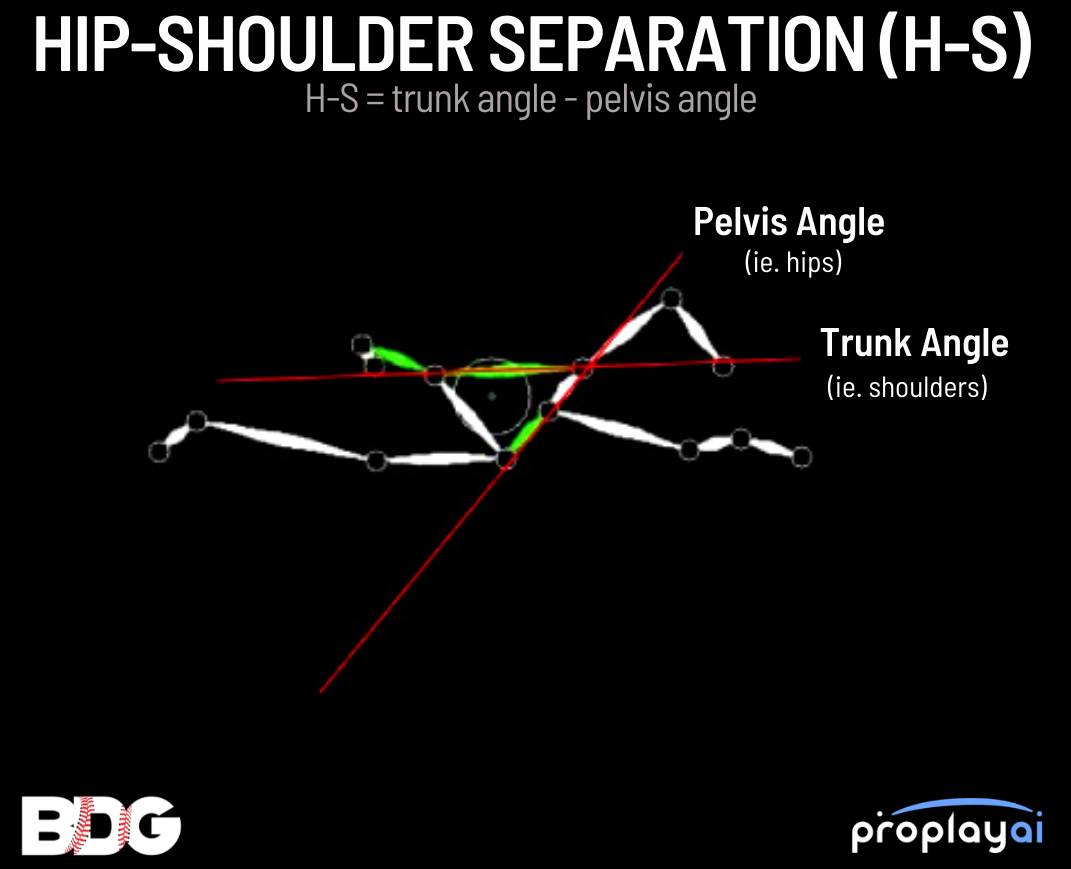
Figure 2: A visual depiction of hip-shoulder separation (H-S).
Lastly, because of the increased linear momentum of the drop-step (towards home plate), we thought we might see an increase in lead knee extension velocity as there is potentially greater force transfer on the front leg at footplant. Similarly, athletes could also move into greater forward trunk tilt at ball release in the drop-step as their momentum continues forward more so than in the janitor or a pitch.
Results
Below is a breakdown of each metric discussed in our hypothesis with the exception of trunk forward tilt as we found no noticeable differences in kinematics. Metrics presented are taken from the athlete averages (N=11) unless otherwise stated.
Timing
To answer the main tenet of this blog: “do the drills create better sequencing?”, our analysis shows both drills elicited a timing shift of various key events in the throw as depicted in Figure 3.
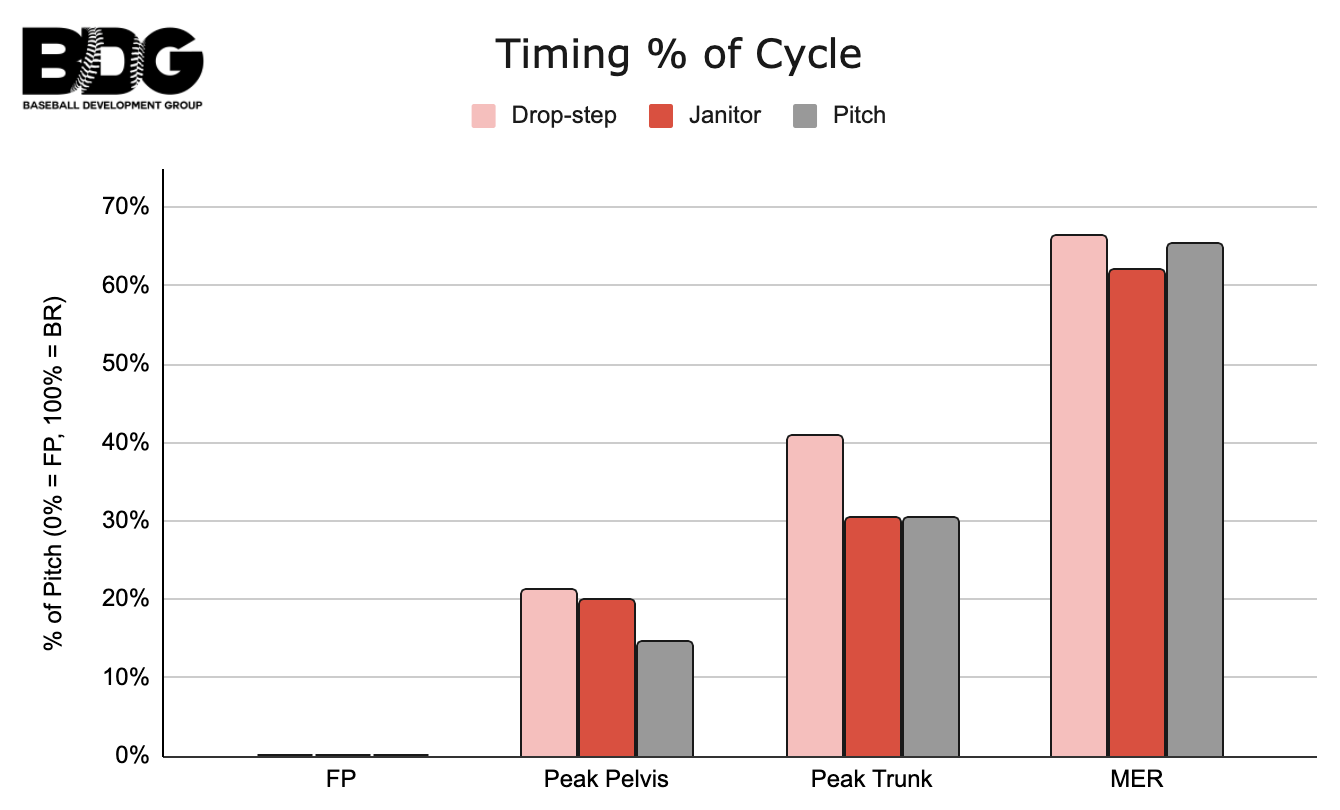
Figure 3: Graph of normalized time (0% = FP, 100% = BR) depicting various timing shitfs.
The most noticeable timing shifts occur at peak pelvis and trunk velocities. With the Janitor and Drop-step shifting the time point of peak pelvis further away from footplant at ~21% of the pitching cycle (0% being FP, 100% being BR) and ~19.9% respectively. With peak trunk velocity, however, we see that only in the drop-step is it ‘delayed’, an increase of about 10% compared to a pitch. As a result, the separation timing is increased during a drop-step whereas the janitor actually decreases the time between these two events.
It is important to note that increasing the timing between these two events is not always better, and having them peak together (ie. your traditional “one-piece mover”) is not good either. There is certainly a happy medium when it comes to sequencing and something that our newest hire, Ryan Bench, is investigating further in his master studies and in his role at BDG as our pitching Analyst.
As far as application is concerned, this insight suggests the Janitor might be best served for athletes that need to work shortening the window between pelvis and trunk peak velocities, while the Drop-step could be used to do the opposite.
Trunk Positioning
With further analysis, we saw that the positioning of the trunk throughout the throw showed a slightly different story, with athletes “opening up” earlier in each drill compared to a pitch. What we can infer from this is as athletes were trying to hold onto counter-rotation of the trunk in each drill, they gradually “leaked open” but were not doing so at considerable velocity.
The biggest change with respect to trunk twist angle occurred from footplant to peak thorax (Figure 4). At footplant we see that each drill creates the intended change, closing the trunk off ever so slightly more than a pitch, however as athletes transition into peak pelvis rotation, trunk angle increases at a greater rate than a pitch.
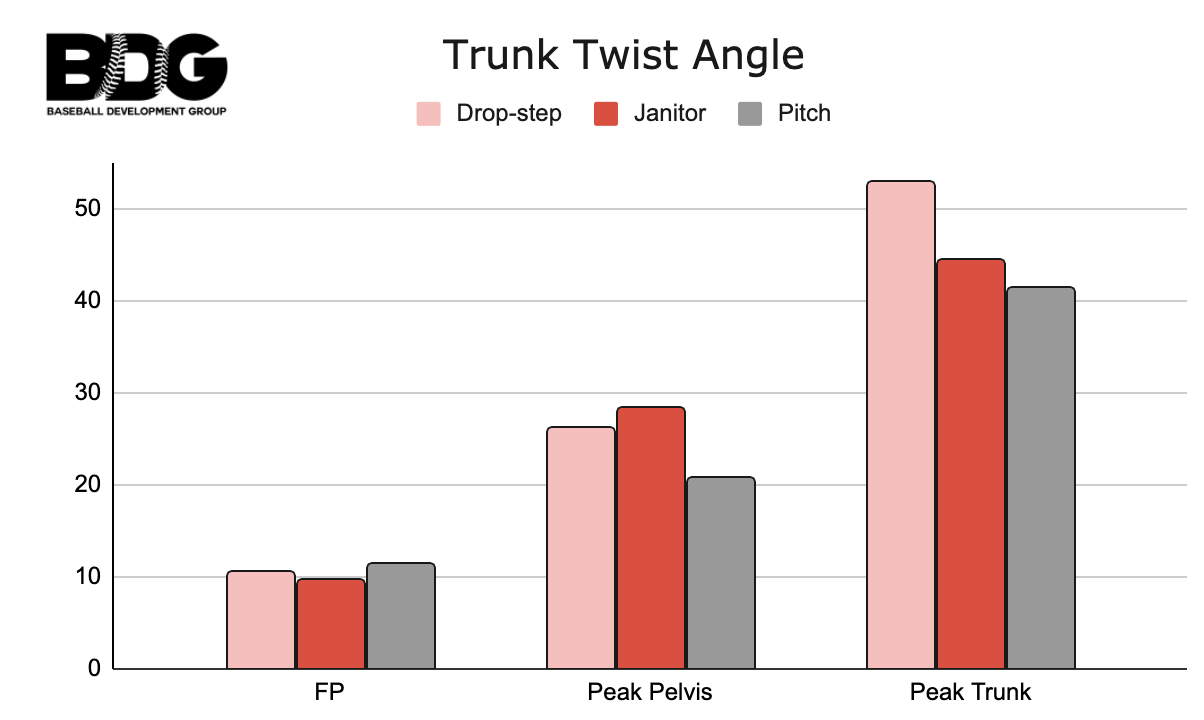
Figure 4: Graph depicting trunk twist angle at the start of pitching cycle.
By peak trunk rotation though, the Janitor is more in line with a pitch (+3 degrees) whereas the Drop-step continues this trend opening up to 52.8 degrees compared to 41.3 in the regular pitch.
For those that have experience coaching the Drop-step, this is not shocking as the tendency is for athletes to swing themselves open to get their eyes aligned on their target – something I touched on in this video demonstration of the drill. This data suggests the Janitor might be a better fit for athletes who consistently struggle with trunk positioning.
Two athletes, in particular, stand out as struggling to keep the trunk “closed” at footplant in each constraint drill. As shown in Figure 5 below, Athletes 2 & Athlete 5 both showed significantly more open trunks at footplant during drills than their pitching motion.

Figure 5: Athlete breakdown of trunk twist angle at footplant.
Part of why this might be occurring is that they already have strong positioning, landing at ~3.5 degrees and ~7 degrees of Trunk Twist angle. Interestingly, each athlete seemed to respond better to one drill than the other. Athlete 2 performed better with respect to trunk twist angle in the janitor drill versus Athlete 4 responding to the drop-step. For the purposes of testing, these athletes were asked to perform these drills despite most likely benefiting from a different constraint drill that targets an inefficiency unique to them.
Now that we have eliminated the guesswork and actually understand how trunk kinematics are influenced by each constraint, we can begin to bucket athletes based on needing to target a positional inefficiency (Janitor) or a velocity inefficiency (Drop-step).
Hip-Shoulder Separation (H-S)
During our hypothesis, we had expected H-S to change based on drill type. The global averages between athletes at footplant proved to be insignificant, with the Janitor leading the way at 44.7 degrees versus 43.4 for a pitch and 44.04 with drop-steps.
While on average, each drill shows a similar H-S at footplant in Figure 6 you’ll notice a few standouts. Specifically, Athlete 2 and Athlete 5 again.

Figure 6: Athlete breakdown of hip-shoulder separation angle at footplant.
Referring back to Figure 5, Athlete 2’s trunk is more open with the Janitor drill at footplant than his pitching motion, but actually creates the most amount of H-S in the Janitor despite this. This offers us some insight into a potential inadvertent strength of the Janitor for certain athletes – getting the pelvis more open at footplant.
Out of the 11 athletes in testing, only Athlete 2 and Athlete 3 landed with a pelvis angle of fewer than 40 degrees at footplant in their pitching motion. This lands on the low side of the normative range seen in the Dobos et al. (2021) CSB submission. In Figure 7 (effect of drill type on pelvic angle) we see that Athlete 2 is clearly more of a responder than Athlete 3, though the Janitor drill elicits a greater pelvis angle in both.

Figure 7: Athlete breakdown of pelvis twist angle at footplant.
On the other side of this spectrum, we also have athletes that appear to be non-responders to this change. For example, Athlete 1 is well within the range we’re looking for in their pitching motion (56 degrees), but they fall to 45 degrees in the Janitor drill. Interestingly, if we refer back again to Figure 5, you’ll see the same occurrence with H-S happen, that Athlete 1 has the greatest H-S in the Janitor compared to the other drills. This is a case where the Janitor greatly helped this athlete hold trunk counter-rotation into footplant, thus increasing H-S.
To generalize, it’s clear that there are many moving parts positionally, and that athletes can respond in very different ways based on a number of different reasons (range of motion, cues, etc) – all the more reason to utilize PitchAI to give objective feedback during training sessions.
On the velocity side of things, the drop-step encourages a faster negative H-S velocity (ie. closing angle of H-S) throughout the pitching cycle with the greatest change coming at Peak Pelvis followed by Peak Trunk (Figure 8). The overall shape of the graphs (Figure 9) appears similar albeit the drop-step moving faster.
Add these together and it seems that drop-steps encourage a more rotational throwing motion, with the janitor not quite having the same effect.

Figure 8: Graph depicting the greatest increases to negative hip-shoulder separation velocity.

Figure 9: Graph showing negative hip-shoulder separation velocity across the entire pitching cycle.
Shoulder Horizontal Abduction (SHABD)
While we’re not directly targeting this metric with either the drop-step or janitor, we hypothesized that SHABD could increase as a byproduct of trying to keep the trunk closed longer.
Similar to Hip-Shoulder Separation, we found the global averages at footplant between drills and a pitch to be roughly the same, with a slight edge to the janitor (Figure 10).

Figure 10: Graph depicting shoulder horizontal abduction angle at footplant between drill types.
When we investigate the athlete-to-athlete breakdown we get a better idea of why Athlete 2 benefited so greatly with the Janitor, nearly doubling their SHABD at footplant compared to a pitch (Figure 11).
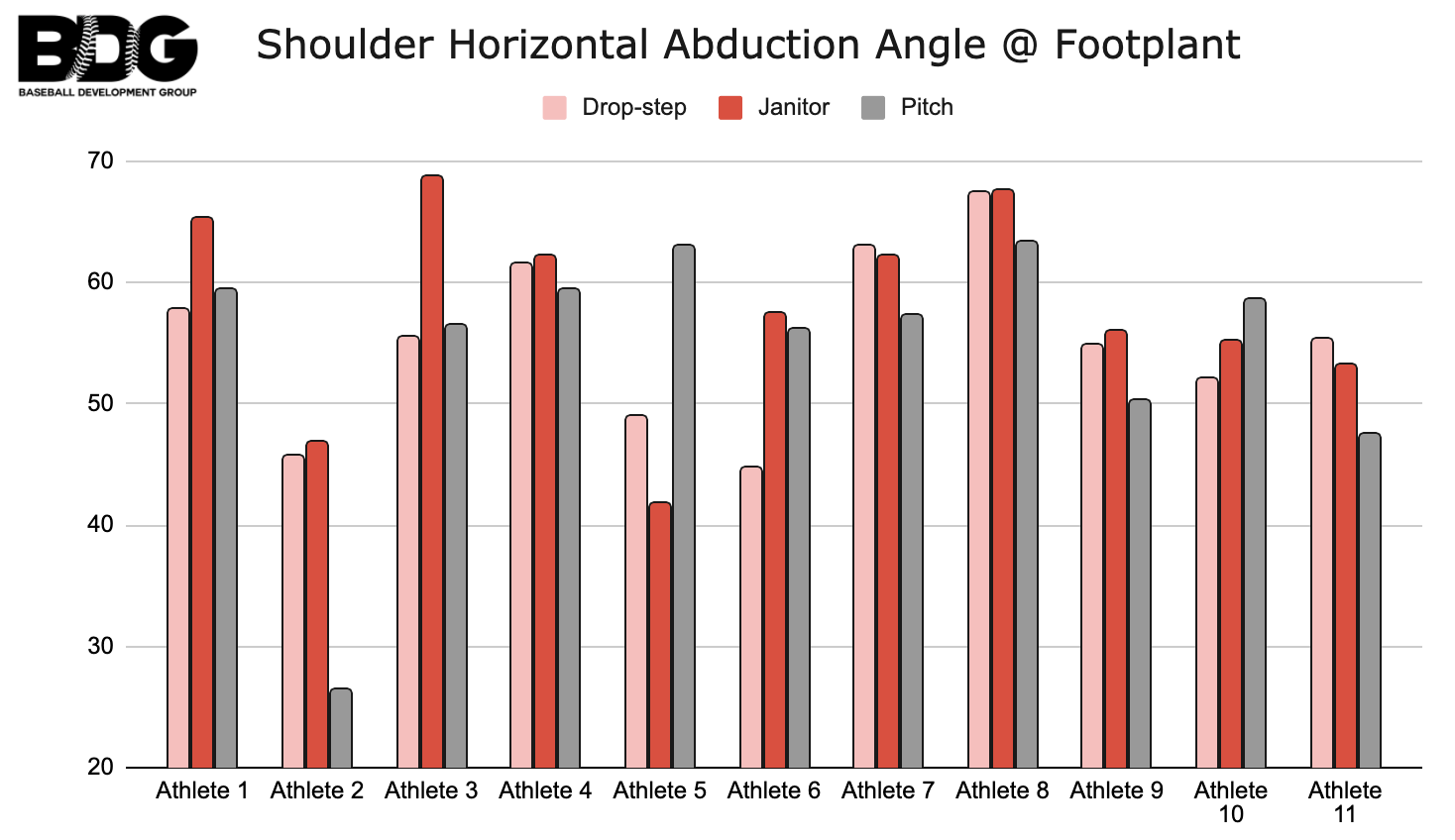
Figure 11: Graph highlighting athlete variance of shoulder horizontal abduction angle at footplant between drill types.
While it is clear there is a strong relationship between SHABD and trunk positioning (ie. increase SHABD correlating with decreased trunk twist angle), Athlete 2 shows us that it is possible to obtain more “scap load” while also “flying open”. Whereas Athlete 5 highlights the expected outcome; losing SHABD systematically causing a more open trunk angle at footplant.
Figure 12 showcases this relationship between trunk angle and SHABD at the peak trunk rotation time point.
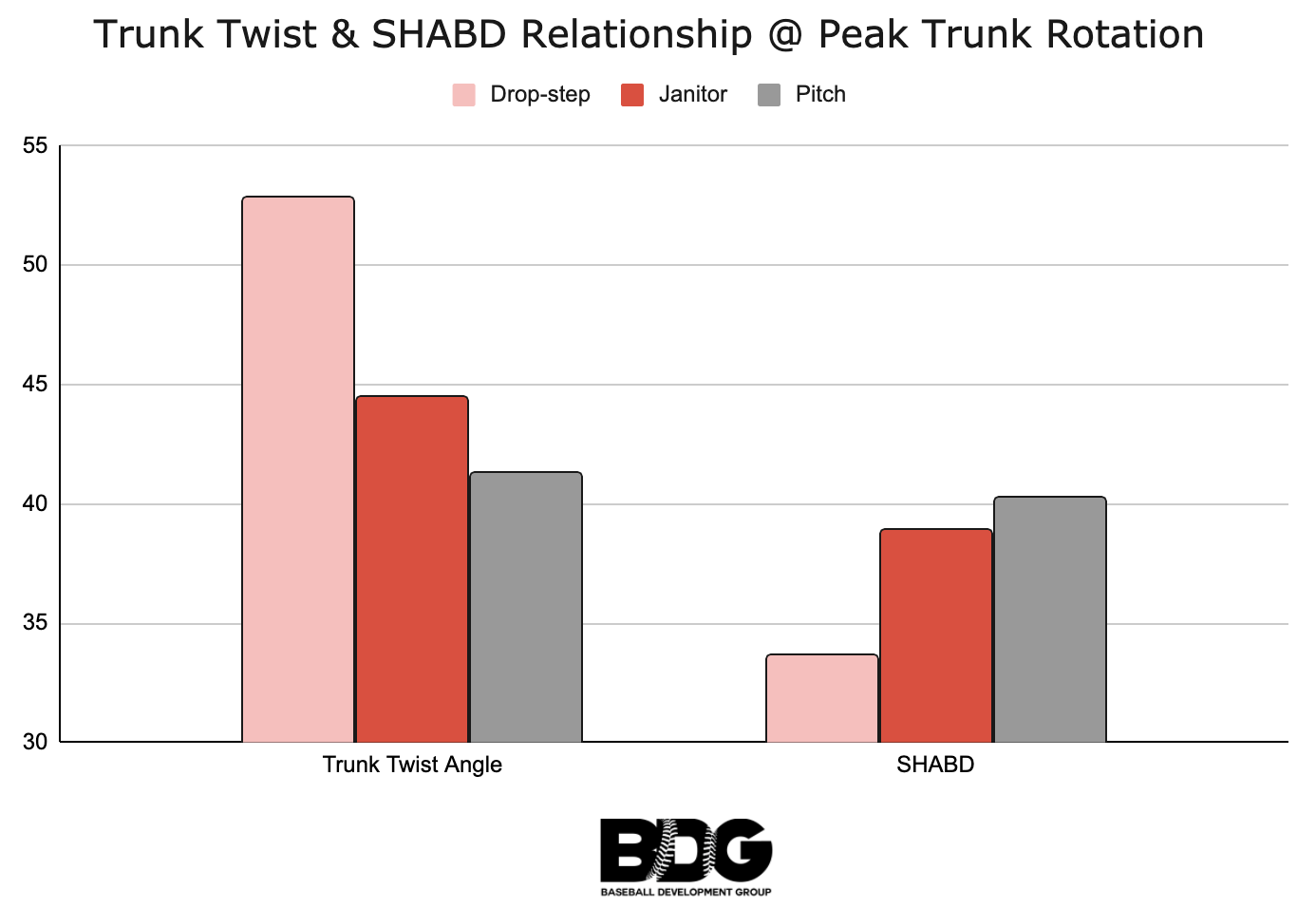
Figure 12: Graph showcasing the relationship between trunk angle and shoulder horizontal abduction at peak trunk rotaton.
Lead Knee Extension Velocity & Angle
There’s quite a lot we still don’t understand about the lead leg and so-called “lead leg blocking”. The lead knee extension velocity kinematic acts as somewhat of a proxy for this mechanical trait but it is by no means telling the whole story of force transfer, impulse, etc. But that’s a topic for another blog post.
As it relates to drill selection, we investigated both knee extension velocity across the pitching cycle and knee extension angle. We found that drop-steps do indeed create a greater velocity of the lead knee, with the highest velocity coming at MER representing a 20.97% increase relative to a regular pitch (Figure 13). Accompanying this increased velocity, the drop-step elicits a gradually more extended lead leg as we progress through the throwing cycle, finishing at roughly 58.8 degrees of extension compared to 53.6 degrees in the pitch (Figure14).
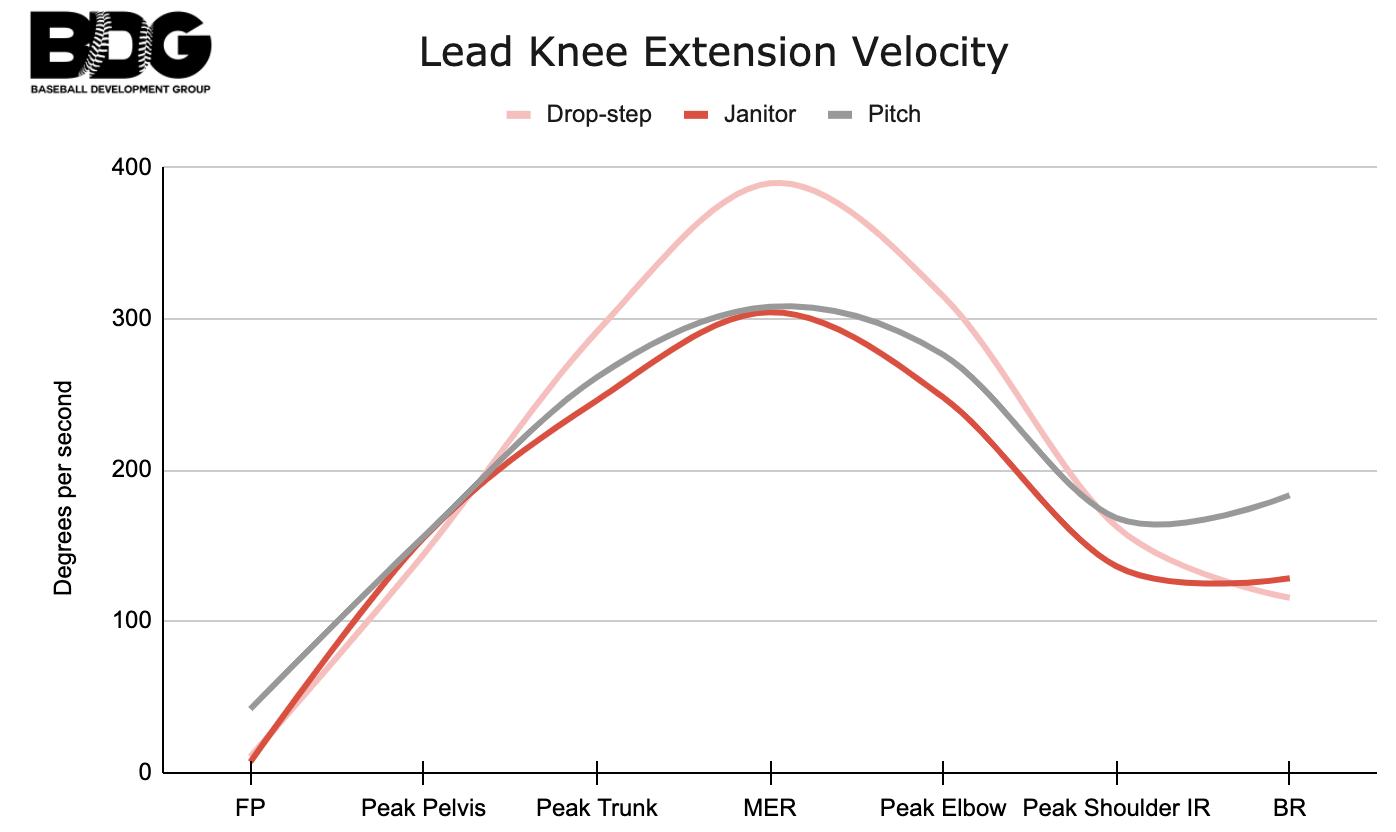
Figure 13: Graph depicting lead knee extension velocity between drill types across the entire pitching cycle.

Figure 14: Graph depicting lead knee extension angle between drill types across the entire pitching cycle.
At footplant, both drills display less knee extension velocity when compared to the pitch despite landing with similar positioning. As we progress further in the pitching cycle the Janitor trends more closely with a pitch diverging slightly from MER onwards. While less extension velocity at ball release makes sense for the drop-step as the leg begins to decelerate from the larger peak at MER, the Janitor seems to create an overall poorer “block”. A worse block in the sense that athletes land at roughly identical positions between the Janitor drill and a pitch, but have the same or less extension velocity throughout the pitching cycle (most notably between the MER and BR window where we expect the greatest velocities to occur) and finish the throw in a nearly identical position as a throw.
This is all to say that for athletes that struggle with lead leg blocking and are trying to improve that mechanical trait, Janitor throws might not be the best fit. Whereas Drop-steps might be a great drill to help an athlete develop both the acceleration and declaration actions of the front leg.
What We’ve Learned
This analysis has mostly confirmed our initial suspicions related to these drills doing a good job of targeting the pelvis and trunk kinematics however within our relatively small testing group it’s already quite obvious how much athlete-to-athlete variance there is. Whether this variance is based on familiarity and experience with the drills, types of cues used, etc, it stands to reason that collecting biomechanical data on an athlete’s drills in training needs to become a norm.


Figure 15: Recapping our findings and how they relate to our hypotheses.
After it became apparent that there were drill responders and drill non-responders, Tyler and I discussed that maybe we should stop trying to prescribe X drill for Y inefficiency and actually let the drill choose the athlete. Since this initial conversation, we’ve taken the approach to baking in a 2-3 week “trial period” for athletes to experiment with a variety of constraint drills and collect PitchAI data on them. At the end of this trial, we analyze the data (along with their initial assessment findings) and identify which drills best target inefficiencies noticed in their pitching delivery. This trial period truly becomes a time of self-organization and long-term I believe it will save us time as coaches.
Why waste an entire training block drilling in, correcting, adjusting, cueing, a drop-step for an athlete that presents with poor separation timing when a janitor could elicit signs of improvement after a mere two sessions?
The data certainly suggests that on average you’d be quite right to prescribe a drop-step for the athlete in question, but we have the ability now to assess each athlete’s unique capabilities within these drills before we become married to one for an extended period of time.
Having a biomechanical lab at our fingertips opens so many more doors for us as coaches. It’s time now that we rethink/challenge our past frameworks and systems and move into this new era of player development
